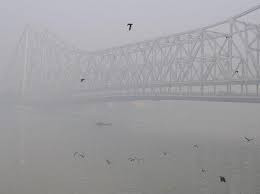Indonesia-Bound Boeing 737 Plummets Over 26,000 Feet Mid-Flight; Passengers ‘Wrote Wills’ Amid Pressurisation Crisis

IIE DIGITAL DESK : Japan Airlines flight under the Spring Japan code-share, operating Boeing 737‑800 JL8696/IJ004, faced a terrifying emergency on June 30, when it suddenly descended from 36,000 ft to 10,500 ft in under ten minutes. The rapid loss of cabin pressure triggered oxygen mask deployment, sending passengers into panic and even prompting some to pen last–minute farewells mid-air .
The incident unfolded around 6:53 PM local time, shortly after the aircraft departed Shanghai Pudong Airport bound for Tokyo Narita, carrying 191 passengers and crew. A muffled boom was reported before cabin pressure plummeted; oxygen masks dropped almost immediately, and a frightened cabin crew instructed passengers to fasten them urgently .
Video clips that surfaced online show passengers, visibly distraught and clasping oxygen masks, some with tear-filled eyes or hands covering their faces. Amidst the chaos, several travelers started scribbling farewell messages, wills, and even personal banking details such as PIN numbers, believing they might not survive .
A passenger’s reflection went viral:
“My body is still here, but my soul hasn’t caught up. My legs are still shaking. When you face life or death, everything else feels trivial.” .
The aircraft descended rapidly before the flight crew declared an emergency and diverted to Kansai International Airport in Osaka, where it landed safely at 8:50 PM. Thankfully, no injuries were reported among passengers or crew .Those on board received 15,000 yen (~₹9,000) compensation and one-night accommodation .
Japan’s Ministry of Land, Infrastructure, Transport and Tourism confirmed the pressurisation system activated an emergency protocol on detecting a drop in cabin pressure . Authorities have launched a full investigation into the malfunction .
This incident further deepens global concerns surrounding Boeing aircraft following several high-profile emergencies. Earlier this year, an Air India Boeing 777 descended sharply moments after takeoff from Delhi, and another Boeing 787 crashed in Ahmedabad, claiming most lives aboard. Similar 737 malfunctions—including crashes in South Korea and China—have renewed questions about Boeing’s pressurisation systems and quality control .
The widespread anxiety among travelers underscores the unpredictable dangers of in-flight emergencies. With emergencies unfolding in under 60 seconds, passengers often have mere moments to brace themselves, leading some to share insurance details, PINs, or say emotional goodbyes—actions revealing both humanity and the peril of sudden depressurisation .
-
Regulatory review: Japan’s transport ministry will audit Boeing’s pressurization designs and emergency response protocols.
-
Airline measures: Japan Airlines and Spring Japan are expected to review maintenance logs and pilot training protocols.
-
Industry impact: Boeing may face increased scrutiny worldwide, potentially leading to safety directives from aviation regulators.
This dramatic episode highlights the critical importance of aircraft integrity and passenger preparedness. A routine international flight turned near-disaster serves as a reminder: at 36,000 feet, safety hinges on flawless engineering, strict maintenance, and cool-headed cabin crews.
You might also like!
















